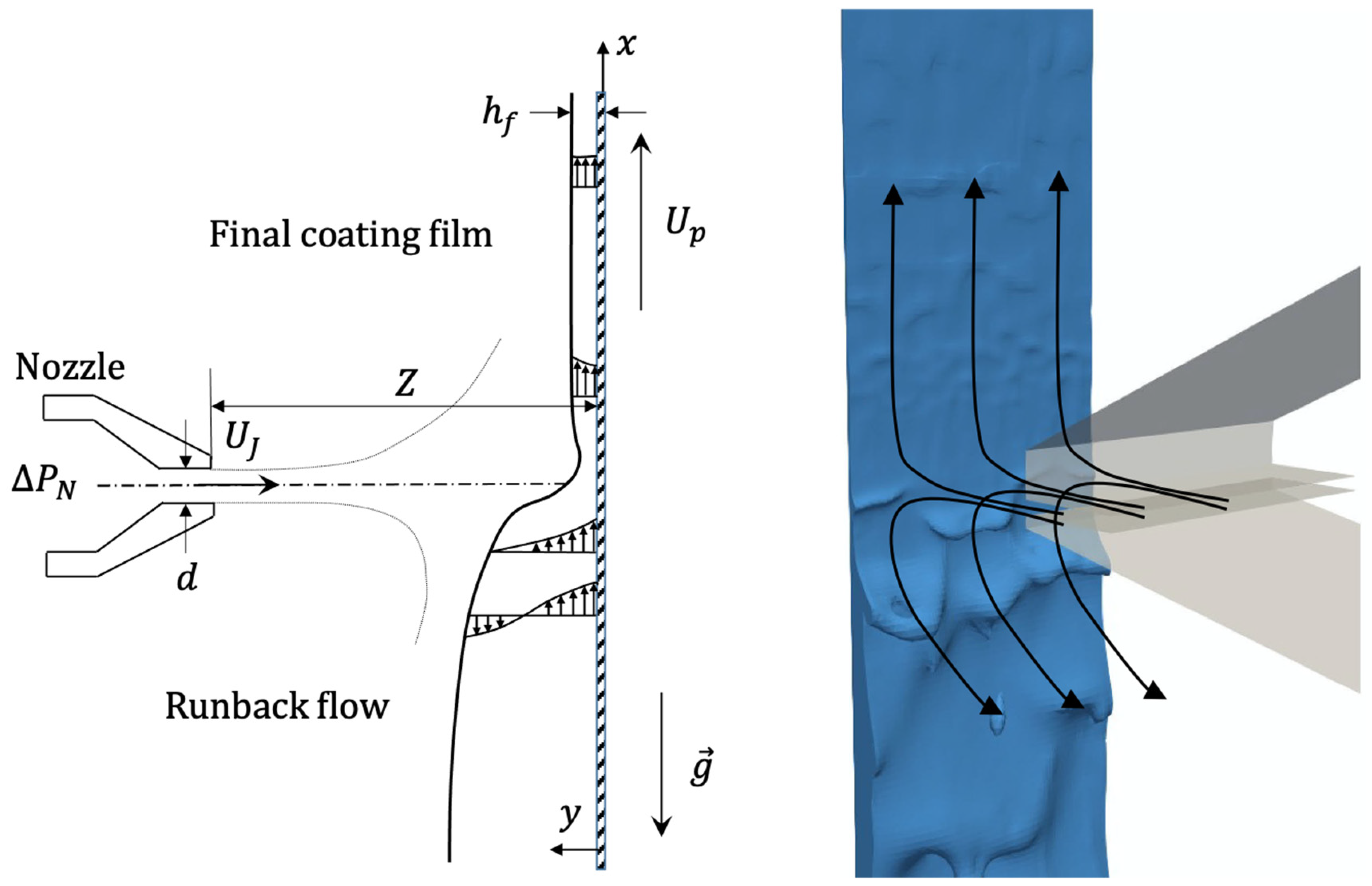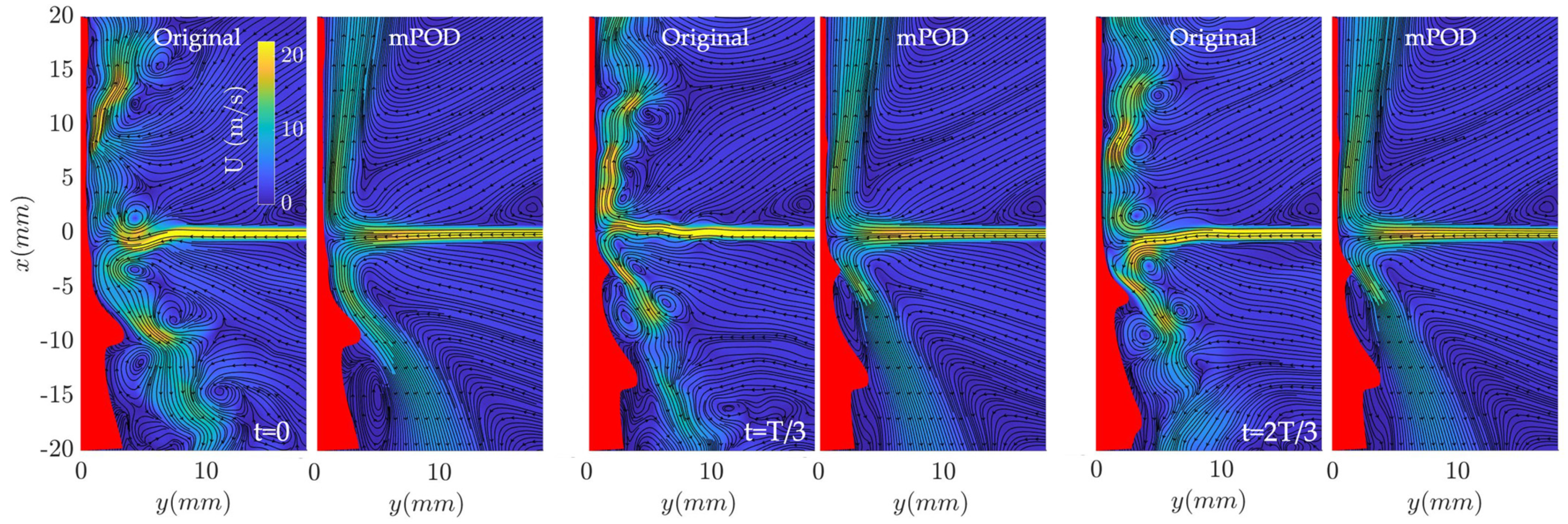Numerical Simulations and Modal Analysis to Investigate the Defects in a Coating Process †
Abstract
:1. Introduction
2. Methodology
3. Results and Discussion
4. Conclusions
Author Contributions
Funding
Data Availability Statement
Acknowledgments
Conflicts of Interest
References
- Mendez, M.A.; Gosset, A.; Buchlin, J.M. Experimental analysis of the stability of the jet wiping process, part II: Multiscale modal analysis of the gas jet-liquid film interaction. Exp. Therm. Fluid Sci. 2019, 106, 48–67. [Google Scholar] [CrossRef]
- Barreiro-Villaverde, D.; Gosset, A.; Mendez, M. On the dynamics of jet wiping: Numerical simulations and modal analysis. Phys. Fluids 2021, 33, 062114. [Google Scholar] [CrossRef]
- Mendez, M.A.; Balabane, M.; Buchlin, J.M. Multi-scale proper orthogonal decomposition of complex fluid flows. J. Fluid Mech. 2019, 870, 988–1036. [Google Scholar] [CrossRef] [Green Version]



Publisher’s Note: MDPI stays neutral with regard to jurisdictional claims in published maps and institutional affiliations. |
© 2021 by the authors. Licensee MDPI, Basel, Switzerland. This article is an open access article distributed under the terms and conditions of the Creative Commons Attribution (CC BY) license (https://creativecommons.org/licenses/by/4.0/).
Share and Cite
Barreiro-Villaverde, D.; Lema, M.; Gosset, A. Numerical Simulations and Modal Analysis to Investigate the Defects in a Coating Process. Eng. Proc. 2021, 7, 30. https://doi.org/10.3390/engproc2021007030
Barreiro-Villaverde D, Lema M, Gosset A. Numerical Simulations and Modal Analysis to Investigate the Defects in a Coating Process. Engineering Proceedings. 2021; 7(1):30. https://doi.org/10.3390/engproc2021007030
Chicago/Turabian StyleBarreiro-Villaverde, David, Marcos Lema, and Anne Gosset. 2021. "Numerical Simulations and Modal Analysis to Investigate the Defects in a Coating Process" Engineering Proceedings 7, no. 1: 30. https://doi.org/10.3390/engproc2021007030
APA StyleBarreiro-Villaverde, D., Lema, M., & Gosset, A. (2021). Numerical Simulations and Modal Analysis to Investigate the Defects in a Coating Process. Engineering Proceedings, 7(1), 30. https://doi.org/10.3390/engproc2021007030







